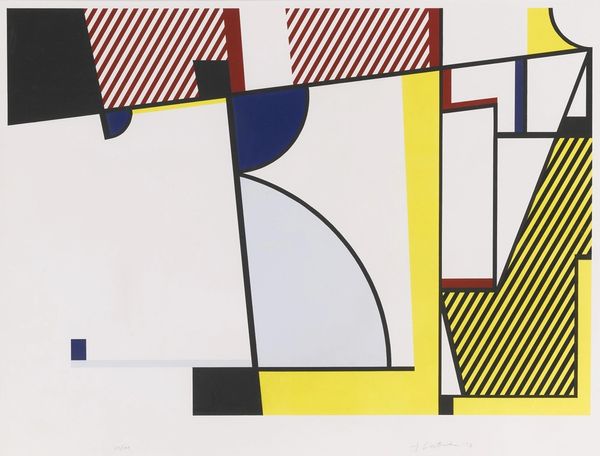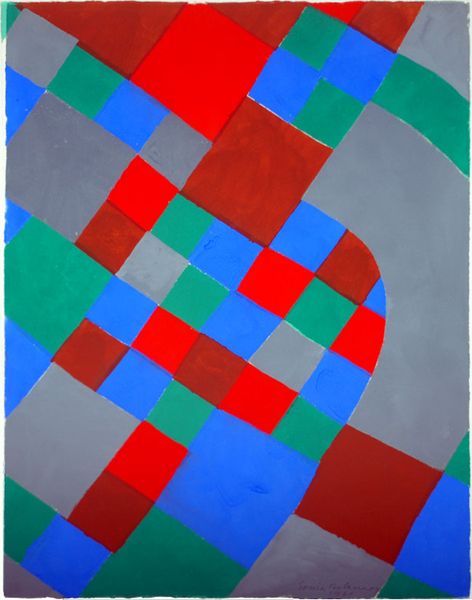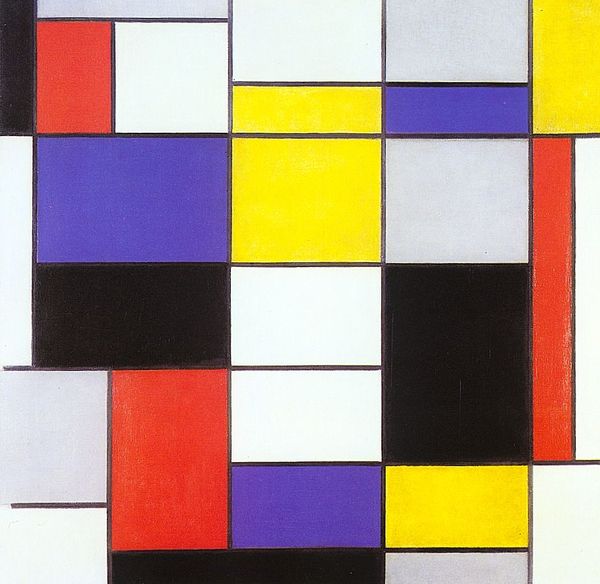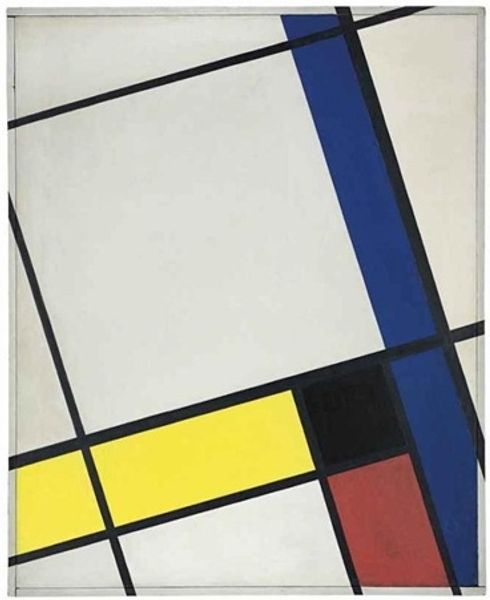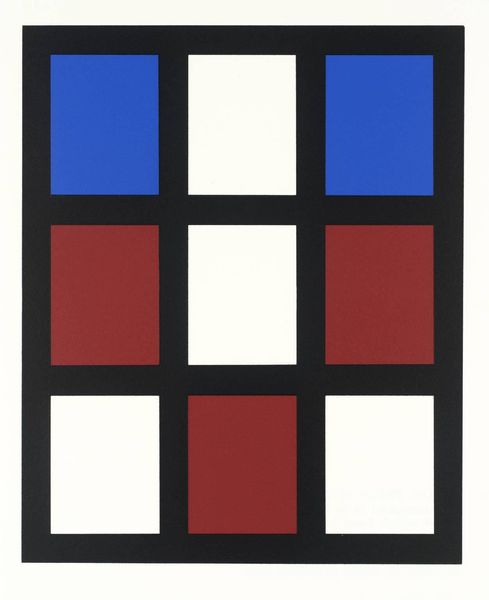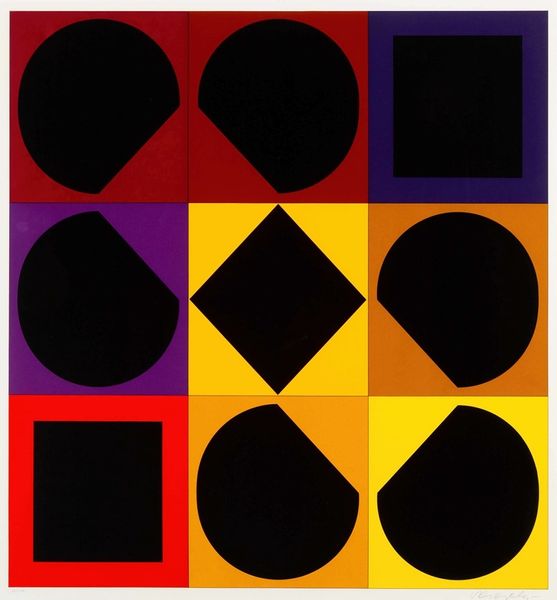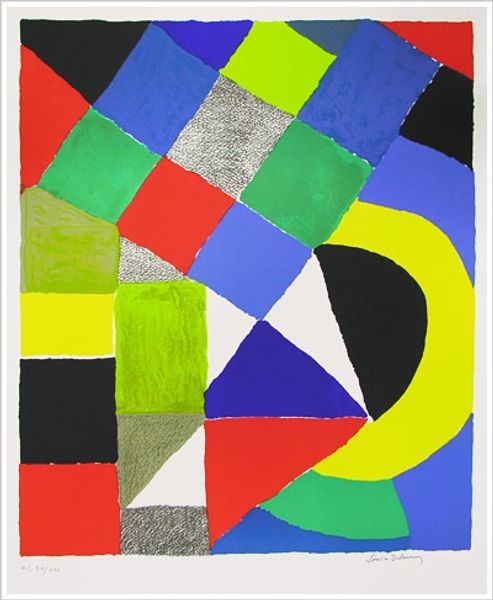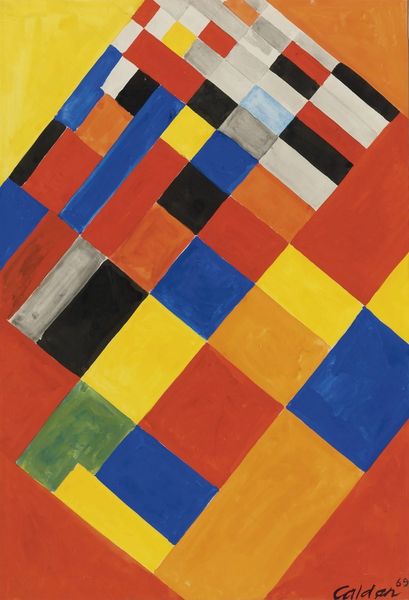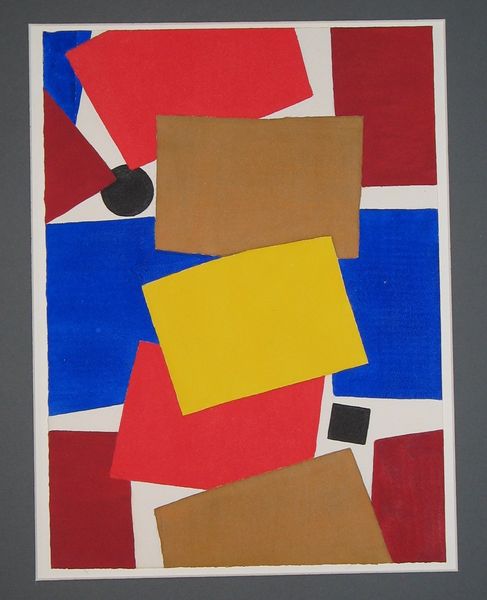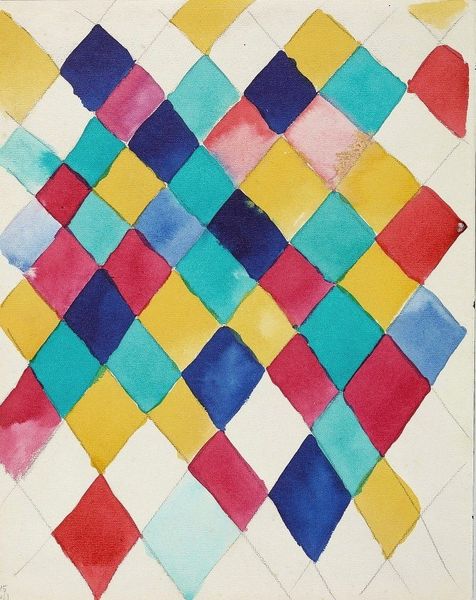
acrylic-paint
#
stencil
#
pop art
#
acrylic-paint
#
abstract
#
geometric-abstraction
#
pop-art
Copyright: Modern Artists: Artvee
Curator: Right in front of us, we have "Faux Vitraux" painted by Alexander Calder in 1970. It’s acrylic paint on paper. Editor: Immediately I'm getting a stained-glass window vibe—though, clearly, the title tells me I’m being tricked. The playfulness of Calder, isn't it wonderful? Curator: Absolutely. "Faux Vitraux" translated to "False Stained Glass," challenges the viewer to consider themes of authenticity. Considering Calder's other works, this piece almost functions as a commentary on class and religious structures. The original stained-glass technique was reserved for upper class churches and nobility... Editor: Okay, but what if he was just thinking diamonds! Yellow, red and blue jewels just stacked haphazardly on top of each other! Look how imperfect the painting is; the way that black paint bleeds, those lines—it makes me want to try it myself. What’s more democratic than picking up a brush, right? Curator: Indeed! The bold shapes create an energetic composition. When examining this specific period of his work, we need to appreciate the context of pop art’s emergence; Calder is simplifying pre-existing symbolic ideas to appeal to a mass audience, rejecting art world elitism and, in so doing, offering a subtle political stance. Editor: Political, maybe, but I also think it’s just a cool visual puzzle. My eyes keep jumping around to find different images embedded in the picture. Curator: And ultimately, it’s in that space—the ambiguity—that this particular work resonates, inviting discussions across the theoretical to uncover unexpected social commentaries. Editor: You know, thinking about it, maybe I need to adjust my own lens a bit... I guess art really is whatever *we* decide to see in it. What a trip!
Comments
No comments
Be the first to comment and join the conversation on the ultimate creative platform.

